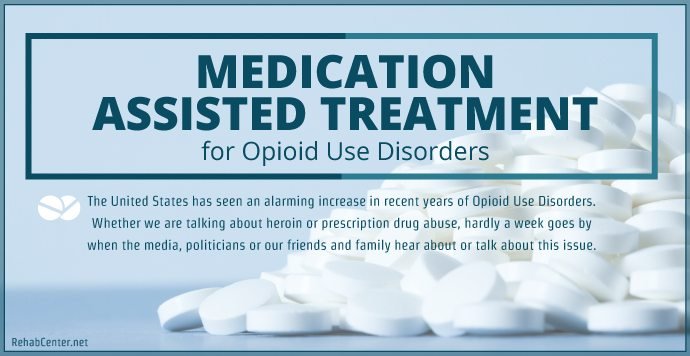Medication Assisted Treatment for Opioid Use Disorders

The Opioid Crisis
The United States has seen an alarming increase in recent years of Opioid Use Disorders. Whether we are talking about heroin or prescription drug abuse, hardly a week goes by when the media, politicians or our friends and family hear about or talk about this issue. It is becoming clear that America has a problem, and the face of it looks like our neighbor, our loved ones and the people we interact with in our daily lives.
Fortunately, there are solutions. Some of these solutions show better success rates than others, and some work better for certain groups of people than others. Choosing the right plan for your recovery can mean the difference between success and failure, getting your life back or even saving it altogether. One treatment that has gained in popularity in recent years is Medication Assisted Treatment (MAT), specifically Buprenorphine Maintenance Therapy (BMT).
History of Buprenorphine
- 2000 Congress passes Drug Abuse Treatment Act (DATA 2000)
- 2002 Buprenorphine and Buprenorphine/Naloxone Approved For Use in Opioid Dependence Treatment
Buprenorphine is not a new drug. It has been used as a pain medication since the 1980s. It was not until 2000 that Congress passed the Drug Abuse Treatment Act of 2000 (DATA 2000). This allowed physicians to prescribe approved medications for long-term treatment of opioid dependence outside of Opioid Treatment Facilities traditionally referred to as “Methadone Clinics”(1)(2).
In 2002, the FDA approved high-dose, sublingual dosages of Buprenorphine and Buprenorphine/Naloxone. Naloxone is an opioid overdose reversal drug when used intravenously, but it had a surprising effect when taken orally—it serves to block the remaining opiate receptors not filled by the Buprenorphine, thereby effectively blocking any new opiates from binding. Doctors now had a safe and effective way of stabilizing patient’s withdrawal symptoms and at the same time keep them from experiencing a high even if they chose to use. This also gave doctors a drug that had a very low likelihood of diversion (1)(2).
What is an “X” License?
Physicians must undergo special training and certification beyond their DEA prescribing license in order to prescribe Buprenorphine for opioid dependence. Physicians who prescribe narcotics or other medications must have a traditional “F” license, but in order to prescribe Buprenorphine drugs they must possess a license specifically for this referred to as an “X” license (3)(4).
In order to take part in Buprenorphine Maintenance Treatment for Opioid Dependence there are two things that are federally required for patients:
- Establishment with a doctor who holds a special “X” DEA license to prescribe Buprenorphine with a signed patient care contract to not use any other opiates and to submit to regular toxicology screenings
- Ongoing formal substance abuse counseling for the entire time you are being treated

X License Limitations:
Physicians are limited as to how many patients they can see at any given time utilizing this special license:
- Up to 30 Patients the First Year
- Up to 100 Patients the Second Year
- In 2016, Congress passed the Comprehensive Addiction and Recovery Act (CARA) which increased the total number of patients that an X licensed physician could have under their care to 275.
This law also allows for Nurse Practitioners (NP’s) and Physician’s Assistants (PA’s) to undergo 24 hours of additional training in order to prescribe Buprenorphine for Opioid Dependency marking a potentially dramatic shift in access to Medication Assisted Treatment (3)(4)(5)(6).
Buprenorphine Maintenance Therapy vs Detox and Abstinence
Abstinence:
Research by Steven Batki, M.D., a professor of psychiatry and behavioral sciences at Upstate Medical University in Syracuse, New York, shows that in opiate dependent patients acute detox followed by abstinence “carries the risk of a very high relapse rate and treatment failure”. His research indicated that nearly 2/3 of opioid dependent patients relapsed without opioid maintenance therapy. This is an alarming rate of relapse and speaks to the veracity of this type of substance use disorder (7).

Buprenorphine Maintenance Therapy:
The first long-term follow up of patients on Buprenorphine/Naloxone Therapy for opioid dependence to pain relievers showed:
- Around half of the patients were abstinent from drugs 18 months after starting the therapy.
- After 3.5 years, the number of patients who reported being abstinent had risen to 61% with less than 10 percent meeting the diagnostic criteria for dependence on prescription pain medication.
Dr. Roger Weiss, of McLean Hospital and Harvard Medical School, who co-led the study state, “Our findings are cause for optimism for these specific patients…(7)” His research also found:
What About Pregnant Patients?
Studies have shown that the mother and fetus both respond very well to Buprenorphine. Naloxone is not safe for pregnant women, so patients who present as pregnant receive Buprenorphine only.
- A study by John Hopkins University showed that Buprenorphine appears to be well accepted by mother and fetus and associated with a low incidence of Neonatal Abstinence Syndrome (9).
- According to a study by the National Institute on Drug Abuse (NIDA), Buprenorphine was associated with fewer overall withdrawal symptoms in newborns when compared to Methadone, another commonly used maintenance therapy (10).
The Two Factors that Strongly Influence Patient’s Chances of Recovery:
1. At each follow-up, patients who told interviewers that they were currently engaged in opioid agonist therapy were much more likely to report that they were abstinent than those who were not using the medications.
2. Patients who had ever used heroin had poorer odds of overcoming their pain reliever addiction than those who had never done so (7).

Conclusion
Overcoming opioid dependence, whether from heroin or prescription drugs, is a challenge to both the patient as well as the clinician. The evidence supports the therapeutic conclusion that acute detox followed by abstinence has a statistically low success rate. Buprenorphine/Naloxone Maintenance Therapy has shown early indications of significantly greater health outcomes for patients over time. While more research is needed to guide clinicians on how long to continue this therapy, the research shows that this therapy is producing more stable outcomes in patients over time.
U.S. National Library of Medicine - New Federal Initiatives To Enhance The Medical Treatment of Opioid Dependence
SAMHSA - Buprenorphine Waiver Management
American Psychiatric Association - Opioid-Addiction Treatment: Maintenance or Abstinence Better?




